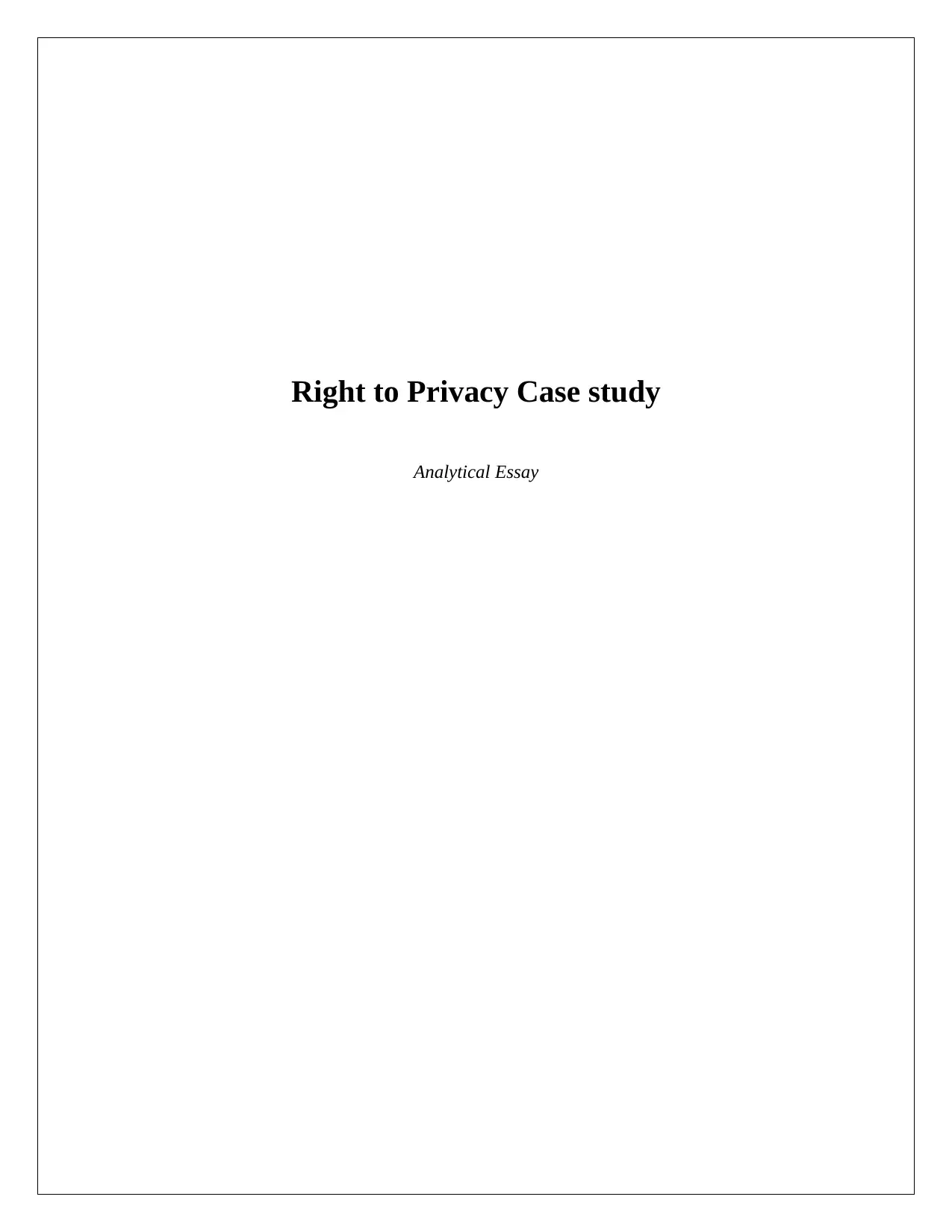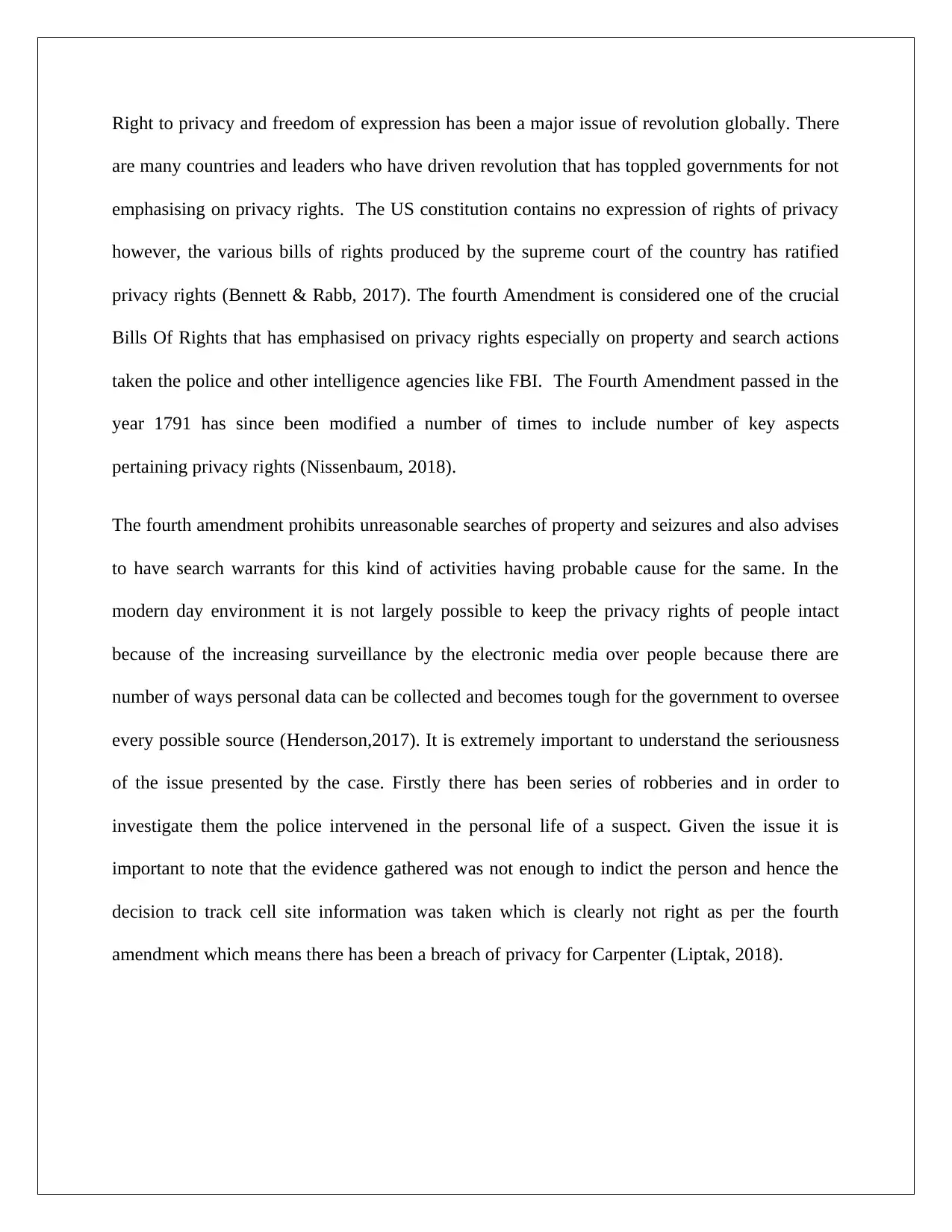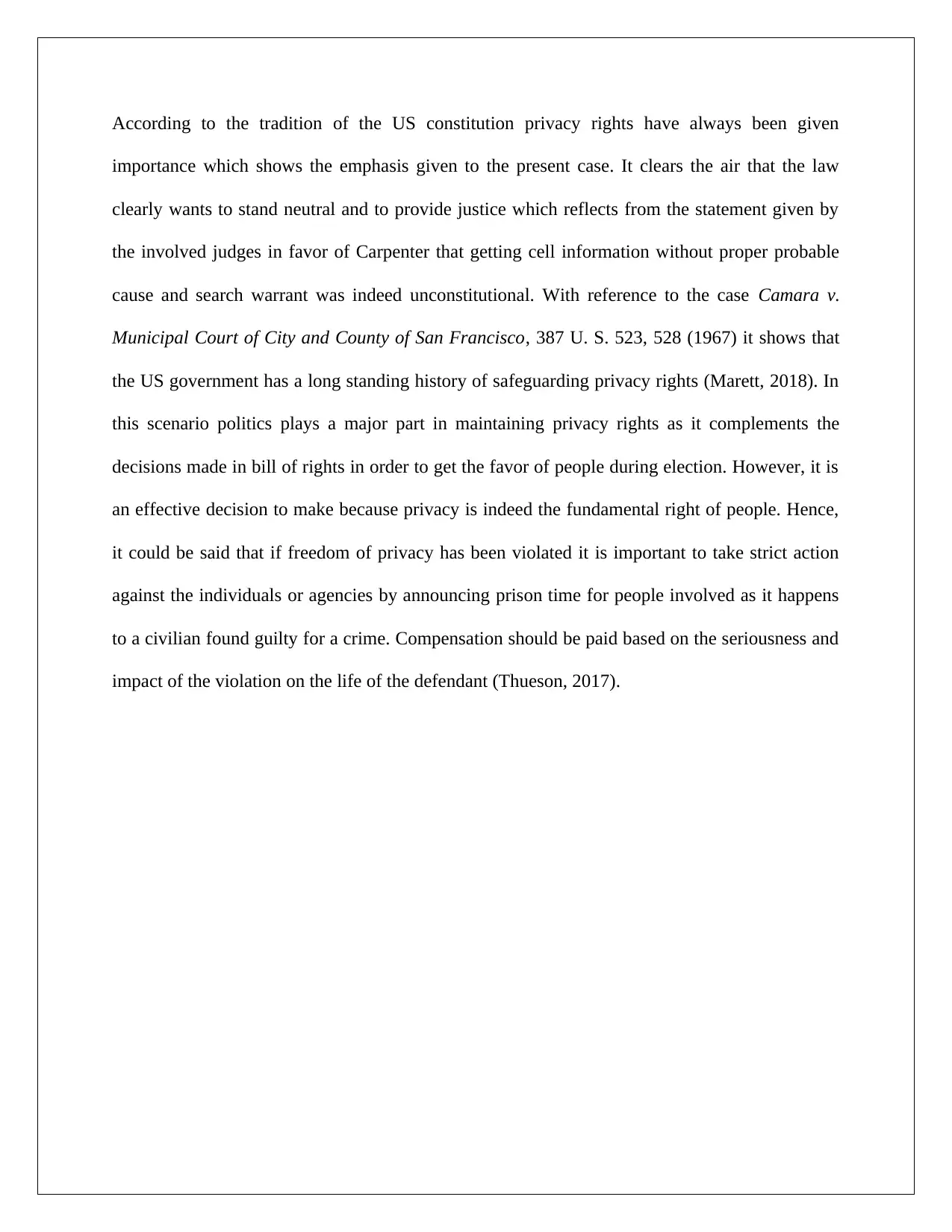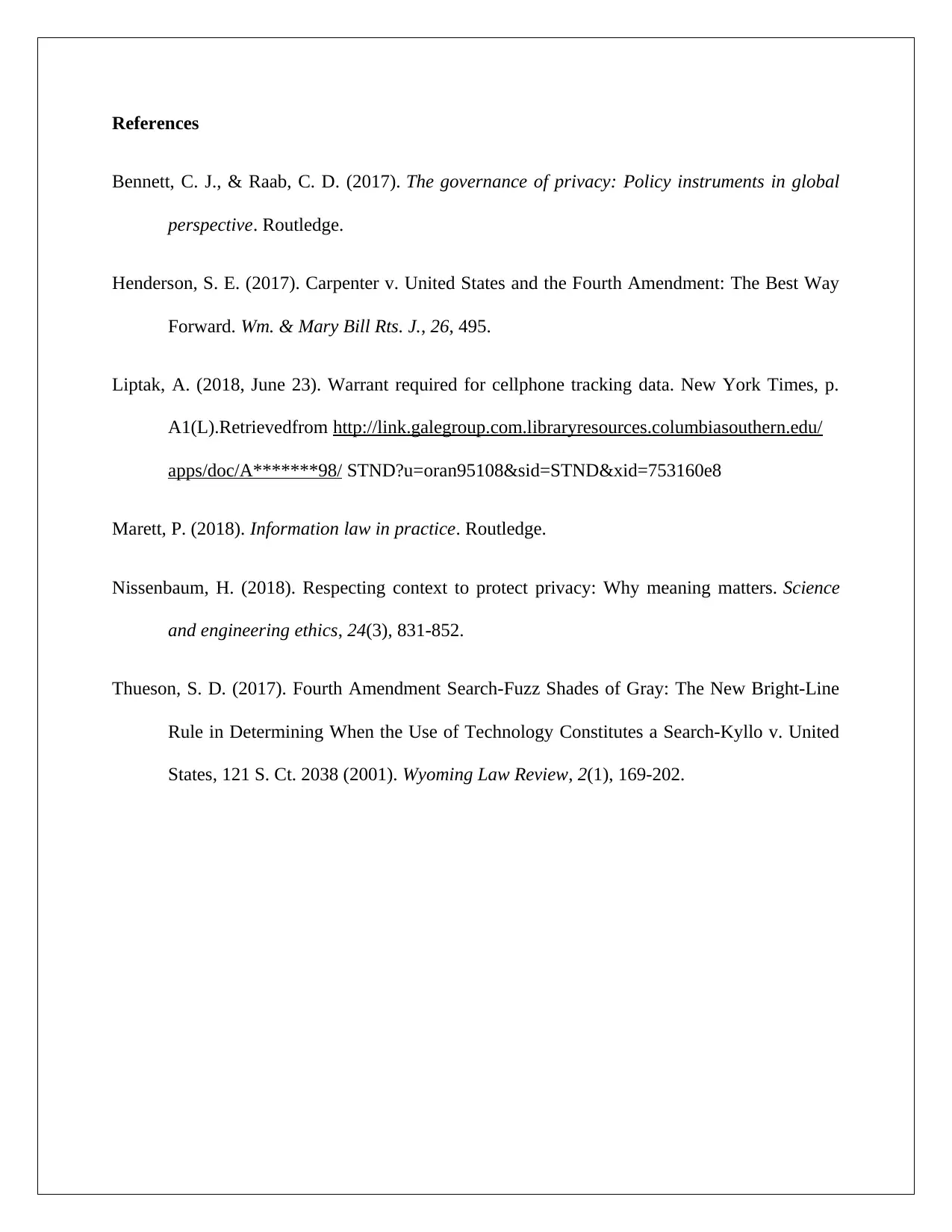Case Study: Analyzing Right to Privacy in Carpenter v. United States
VerifiedAdded on 2023/04/23
|4
|771
|71
Case Study
AI Summary
This case study analyzes the landmark Supreme Court case, Carpenter v. United States, focusing on the Fourth Amendment and its implications for the right to privacy in the digital age. The case revolves around the government's access to cell-site location information (CSLI) and whether a warrant is required. The analysis delves into the historical context of privacy rights, the evolution of Fourth Amendment jurisprudence, and the impact of technology on personal data. The case study examines the arguments presented by both sides, the court's decision, and the dissenting opinions, highlighting the complexities of balancing law enforcement needs with individual privacy rights. The study underscores the importance of adapting legal frameworks to address the challenges posed by modern surveillance technologies and explores the potential consequences for civil liberties. It also touches upon the interplay of politics and privacy, compensation for violations, and the significance of safeguarding fundamental rights in a rapidly changing technological landscape. The case study incorporates references to relevant legal precedents and scholarly articles to provide a comprehensive understanding of the issues at hand.
1 out of 4











![[object Object]](/_next/static/media/star-bottom.7253800d.svg)